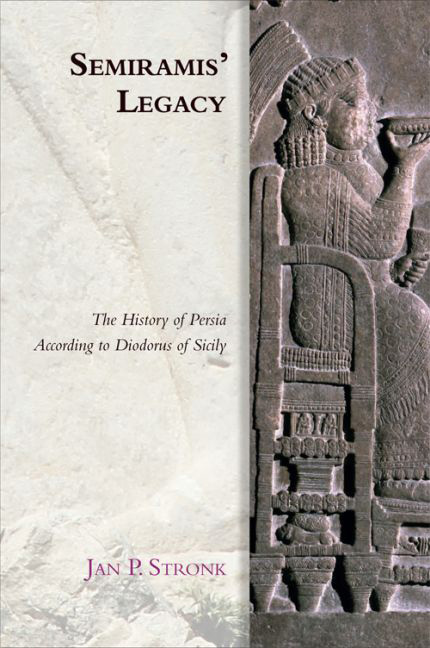Book contents
- Frontmatter
- Contents
- List of Figures and Tables
- Preface
- Abbreviations
- Series Editor's Preface
- Map
- Introduction: Diodorus' Work and Our Sources
- 1 Diodorus’ Sources
- 2 Ancient History: Assyrians, Chaldeans, and Medes
- 3 The Persians and the Greek Wars
- 4 Revolt and Sedition
- 5 Alexander the Great Defeats Darius III
- 6 From Persepolis to Babylon
- 7 The Period of the Diadochs: The Rift Opens
- 8 The Period of the Diadochs: The Rift Deepens
- 9 The Vicissitudes of the Diadoch Kingdoms: The Final Years of Diodorus' Persian Account
- 10 Semiramis' Legacy
- Conclusion
- Bibliography
- Index of Classical Sources
- Index of Modern Authors
- General Index
Series Editor's Preface
Published online by Cambridge University Press: 10 May 2017
- Frontmatter
- Contents
- List of Figures and Tables
- Preface
- Abbreviations
- Series Editor's Preface
- Map
- Introduction: Diodorus' Work and Our Sources
- 1 Diodorus’ Sources
- 2 Ancient History: Assyrians, Chaldeans, and Medes
- 3 The Persians and the Greek Wars
- 4 Revolt and Sedition
- 5 Alexander the Great Defeats Darius III
- 6 From Persepolis to Babylon
- 7 The Period of the Diadochs: The Rift Opens
- 8 The Period of the Diadochs: The Rift Deepens
- 9 The Vicissitudes of the Diadoch Kingdoms: The Final Years of Diodorus' Persian Account
- 10 Semiramis' Legacy
- Conclusion
- Bibliography
- Index of Classical Sources
- Index of Modern Authors
- General Index
Summary
Edinburgh Studies in Ancient Persia focuses on the world of ancient Persia (pre-Islamic Iran) and its reception. Academic interest in and fascination with ancient Persia have burgeoned in recent decades and research on Persian history and culture is now routinely filtered into studies of the Greek and Roman worlds; Biblical scholarship too is now more keenly aware of Persian-period history than ever before; while, most importantly, the study of the history, cultures, languages, and societies of ancient Iran is now a well-established discipline in its own right.
Persia was, after all, at the centre of ancient world civilisations. This series explores that centrality throughout several successive ‘Persian empires’: the Achaemenid dynasty (founded c. 550 BCE) saw Persia rise to its highest level of political and cultural influence, as the Great Kings of Iran fought for, and maintained, an empire which stretched from India to Libya and from Macedonia to Ethiopia. The art and architecture of the period both reflect the diversity of the empire and proclaim a single centrally constructed theme: a harmonious world-order brought about by a benevolent and beneficent king. Following the conquests of Alexander the Great, the Persian Empire fragmented but maintained some of its infrastructures and ideologies in the new kingdoms established by Alexander's successors, in particular the Seleucid dynasts who occupied the territories of western Iran, Mesopotamia, the Levant, and Asia Minor. But even as Greek influence extended into the former territories of the Achaemenid realm, at the heart of Iran a family of nobles, the Parthian dynasty, rose to threaten the growing imperial power of Rome. Finally, the mighty Sasanian dynasty ruled Iran and much of the Middle East from the second century ce onwards, proving to be a powerful foe to Late Imperial Rome and Byzantium. The rise of Islam, a new religion in Arabia, brought a sudden end to the Sasanian dynasty in the mid-600s CE.
These successive Persian dynasties left their record in the historical, linguistic, and archaeological materials of the ancient world, and Edinburgh Studies in Ancient Persia has been conceived to give scholars working in these fields the opportunity to publish original research and explore new methodologies in interpreting the antique past of Iran.
- Type
- Chapter
- Information
- Semiramis' LegacyThe History of Persia According to Diodorus of Sicily, pp. xvi - xviiPublisher: Edinburgh University PressPrint publication year: 2017



